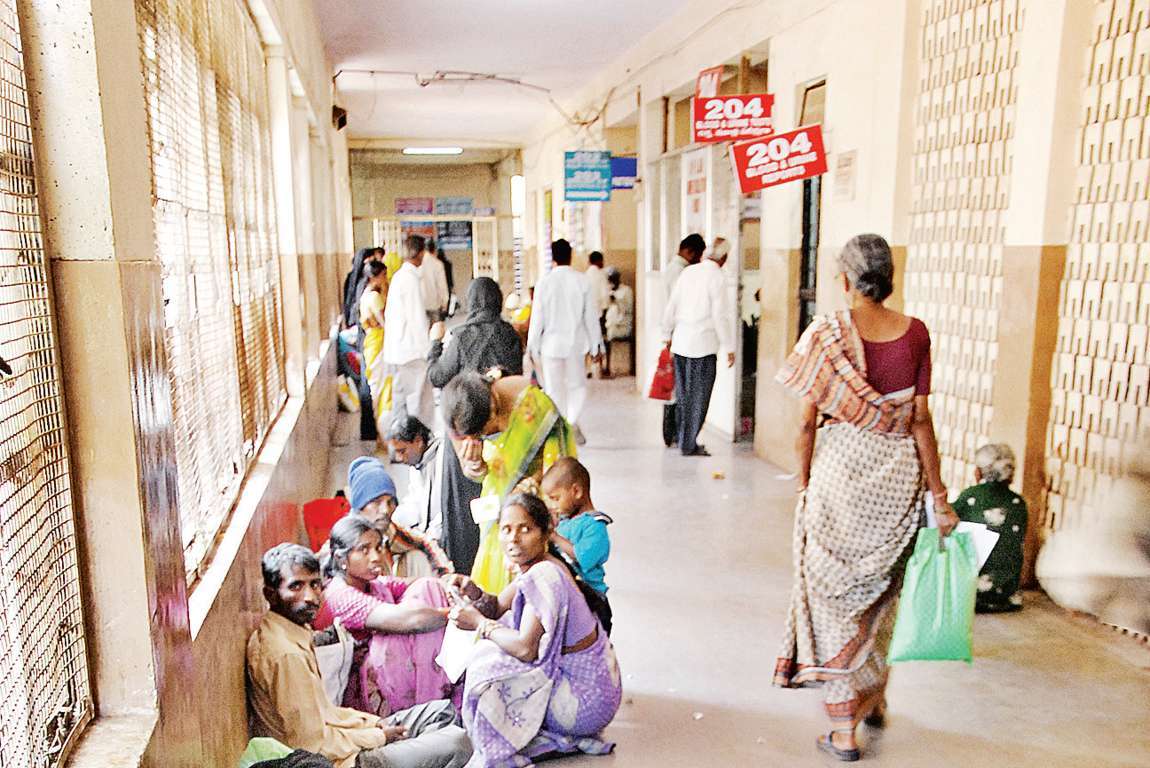
The Sorry State of the Government Healthcare
by Yash Saboo January 16 2018, 2:15 pm Estimated Reading Time: 2 mins, 45 secsAt least 60 children died over five days at a government hospital in UP's Gorakhpur district due to oxygen shortages at the hospital. This was a very shocking incident that happened back in August 2017 and was one of many cases that caught media's eyes. Such cases reflect upon the poor functioning of public sector hospitals making it the primary reason for people choosing private hospitals over public.
The 4th National Health and Family Survey (NHFS) unveiled some really interesting figures about healthcare. It says that the demand for private sector healthcare is by and large comparable in both urban and rural settings: 56% of urban India chooses private healthcare and 49% of rural India makes the same choice.
The percentage of households using the public sector for healthcare increased over the ten years between the last survey held in 2005-2006 and the recent one. In the 2005-2006 round, the percentage of those households using public sector healthcare was 34% and in this round, it is 45%. Both rural and urban settings largely access government healthcare at government and municipal hospitals.
The NHFS captures data for households who don’t use government health facilities when they are sick. The survey collected this information on the following grounds: no nearby facility, inconvenient timings of the facility, absent health personnel, a long waiting time and poor quality of care.
Overall, 55.1% of households don’t use government health facilities. The leading reason for this is the poor quality of care – 48.1% households responded with this reason. The close second reason, at 44.6%, is that there is no nearby facility at all. And a close third, at 40.9%, is that even if they come to a facility, the waiting time is too long.

Source : NewIndianExpress
Another study conducted by IMS Institute for Healthcare Informatics, in over 14,000 households across 12 states (including urban and rural areas) has revealed that there has been a steady increase in the usage of private healthcare facilities over the last 25 years for both Out Patient and In-Patient services, across rural and urban areas. In 1986 – 1987, the choice for patients in both rural and urban centres was tilted in favour of public hospitals over private hospitals (60 to 40). In 2012, 61 per cent in urban areas had chosen the private sector over the public, and in rural areas, nearly 69 per cent had put their faith in the private sector.
Why? Especially if one considers that costs in the public health care set up are way cheaper than in the private centres. But the patients had their own reasons: the key among them being long waiting periods and non-availability of medicines, apart from non-availability of doctors and infrastructure.
Nearly 44 per cent of patients groused about the waiting period; while 52 per cent said there were no diagnostic facilities in government hospitals. Comparatively, they said, it was easier to meet a doctor in the private sector.
The other serious question that the study covered was the one on access. It has assumed that for a person to have access to healthcare in India, a facility must be reachable within a 5-km radius and must offer available doctors, drugs and treatment options that satisfy both acceptable cost and quality-of-care standards.
So... the question arises, isn't it high time the government starts investing some serious time and money into improving the public health care sector?




-173X130.jpg)
-173X130.jpg)
-173X130.jpg)
-173X130.jpg)
-173X130.jpg)
-173X130.jpg)
-173X130.jpg)
